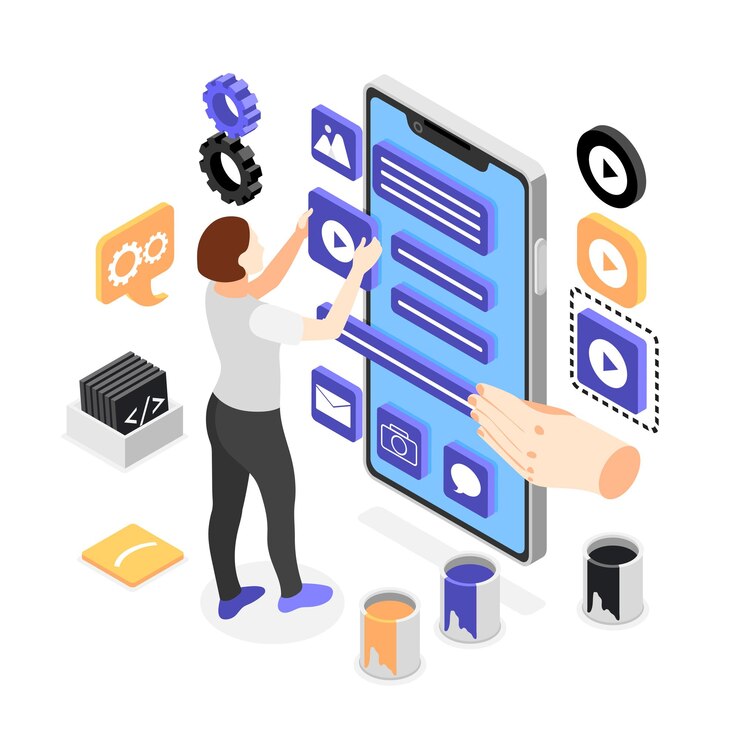A study found that 29% of users notice bugs and glitches in their apps once a week or more, and 78% of users notice these issues in their apps. Having a robust bug-tracking system is imperative, regardless of whether you’re developing your company’s first app or growing an already-existing one. A bug tracking app works as a gold coin for identifying and repairing software bugs. Moreover, it can improve the quality of your finished product.
This comprehensive article covers the best practices for implementing an efficient bug tracking system for mobile development, along with instructions on how to create one.
As we figure out how to develop an efficient bug tracking software for your particular needs, we’ll precisely go over various types of bug tracking systems.
Let’s delve into it.
What is Bug Tracking Software?
Bug tracking software is a tool specifically designed for managing bugs throughout the software development life cycle, especially in mobile development. Also known as an issue tracking system, this software is carefully crafted to assist development teams in efficiently monitoring and addressing software bugs. These tools are essential for Android app developers during testing, allowing them to keep track of and resolve issues within their projects. Bug tracking software provides a centralized platform for documenting, organizing, and resolving reported bugs.

Importance of Bug Tracking Systems
Bug tracking systems are important for the following vital reasons:
1: Handle Bugs Effectively:
Developers can find and fix problems more quickly when using bug tracking systems, which offer a centralized platform for logging and managing bugs.
2: Improve Teamwork:
By giving team members a common area to discuss and handle bugs, bug tracking systems promote teamwork. As a result, there is an increase in communication and consensus-building.
3: Streamline Testing Process:
Bug tracking systems facilitate the organization and prioritization of bugs, which helps testers concentrate on important problems and expedites the testing process.
4: Boost Software Quality:
During the development cycle, bug tracking systems help find and fix issues early on, which improves the overall quality of the Android app. This results in increased customer satisfaction and an improved user experience.
Top Bug Tracking Systems
Following is a list of top bug tracking systems that existed:
1: Jira
Jira has to be on the top of our list due to its usefulness. It is a software application developed by an Australian company to manage projects, automate workflows, and identify bugs.
Apart from this, Jira is a highly professional project management tool. Widely used by software development teams, Jira is considered as a centralized platform for assigning, tracking and overseeing tasks and locating and resolving bugs throughout the software development lifecycle.
Jira is a highly-customizable software and is available in both cloud and self-hosted versions.
2: GitHub Issues
GitHub Issues is a progress discussion, tracking and bugs monitoring web-based tool. It is integrated with the code hosting platform GitHub. You can easily track bugs on time and monitor the project performance of your team members using GitHub issues. Its notable features include creating, tagging and prioritizing tasks, commenting for continuous improvement, and finding, sharing and collectively solving bugs on the go.
3: Asana
Similar to the above two, Asana is a project management and team collaboration tool. It is widely used by software developers, project managers and marketing teams. What makes Asana different from its competitors is that it offers to create, manage and monitor not only tasks but subtasks as well.
Asana works great for teams which need a collaborative working environment to facilitate them with project management and bug tracking systems without a hassle.
4: MantisBT
MantisBT or Mantis Bug Tracking is a free and open-source bug tracking system. It offers issues tracking during your software projects and helps you resolve glitches without going over the codes again and again. MantisBT allows developers to generate bug tracking reports, monitor real-time performances, and assign tasks to the developers.
5: Bugzilla
Bugzilla is a free and open-source bug tracking software. It has a range of features that has made it popular among commercial software development teams. Working with Bugzilla offers you to develop trends, identify reports, manage issues and bugs – last but not the least, you can customize your teams’ workflows, avail automated notifications and advanced search features.
Moving towards developing a bug tracking system for your mobile development.
How to Set Up a Bug Tracking System for Mobile Development?
Following is a systematic way to create a bug tracking system for your mobile development.
1. Identify Your Needs
To formulate your requirements, you must consider the scope of the project and identify the specific needs your app intends to cater. Start by assessing the size of your team and the project, as this will influence the quantity of users who require access to the system. If your development team is large, you may need a bug tracking system with communication tools and support for multiple users.
2. Selecting a Proper Bug Tracking System
Bug tracking systems are available in different configurations, each with special features and advantages for distinct uses. For example, open source systems are developed by a community of developers, are free, and offer extensive customization options. Although they have a large community following and offer flexibility, they might not receive regular updates and support.
Commercial Systems, on the other hand, are for-profit programs like Jira that are easy to use and provide cutting-edge features like automated bug detection and project management integration. They can be expensive, but they are perfect for larger teams. Another option to think about is a cloud-based system. These systems, which are accessible from any location with an internet connection, frequently come with security features and automated backups. They might, however, have few customizing options and demand recurring subscription fees.
3. Customize The System To Your Needs
The goal of this step is to ensure that the system works perfectly with your team’s workflow. This might involve configuring system settings, adding custom fields, or setting up new procedures. By customizing the system, you can ensure that issues are consistently reported and improve your bug reporting procedure. You should also ask your teammates about their needs. Once you have a clear understanding of what your team needs, you can begin configuring the system’s settings and workflows to match those requirements.
4. Configuring Your System
If you’re eager to get your app’s bug-tracking system up and running, start from determining the size of the project and the particular requirements of your development team. Take into account the size of the team, the nature of the project, and any necessary tool integrations or compliance requirements. When selecting the best one, weigh aspects like price, features, and compatibility with your current devices (we’ve listed the main advantages of each above).
5. Analyze Your System’s Budget
Make sure the system fits within your budget, has the features your team needs, and can be customized to meet the unique needs and workflows of your team. This could entail setting up new workflows, adding custom fields, or configuring settings. Additionally, you ought to think about creating instructional materials and offering practical training so that everyone can use the new system with ease.

6. Testing Your System
To continuously improve the user experience, welcome questions and feedback. Next, design test cases to confirm that bug reports and tracking are accurate. Engage your staff in this process to make sure the system satisfies their requirements and implement any necessary changes.
Wrapping Up
A well-equipped and well-developed bug tracking system can be a game-changer for mobile development. If done right, by incorporating the step-by-step approach discussed above, bug tracking system leads to high-quality end products. Moreover, it is important to prepare your team to handle issues efficiently.
Stackup Solutions, a leading name in mobile app development, is one-of-a-kind digital solutions company that employs modern practices and sophisticated tools for app development. If you have any queries regarding app development or you want to build your own bug tracking system, feel free to reach out to us for a comprehensive consultation!
FAQs
1. Why is a bug tracking system important for mobile development?
To ensure that teams handle defects effectively, a bug tracking system is essential in all software development, but it is especially important for mobile development. It streamlines and improves the application development process, reducing the amount of time needed to finish and produce a high-caliber mobile application.
2. What features should I look for in a bug tracking system?
When selecting a bug tracking system, some important factors to consider are: handling multiple bug reports, automated bug identification, integration with project management tools and applications, graphical user interface, and issue tracking.
3. How can I effectively train my team to use a bug tracking system?
You can train your team by giving them thorough training materials, hold practical workshops, and provide ongoing support. Make sure that everyone is aware of the procedures for filing bug reports, handling them, and fixing them in the system.





